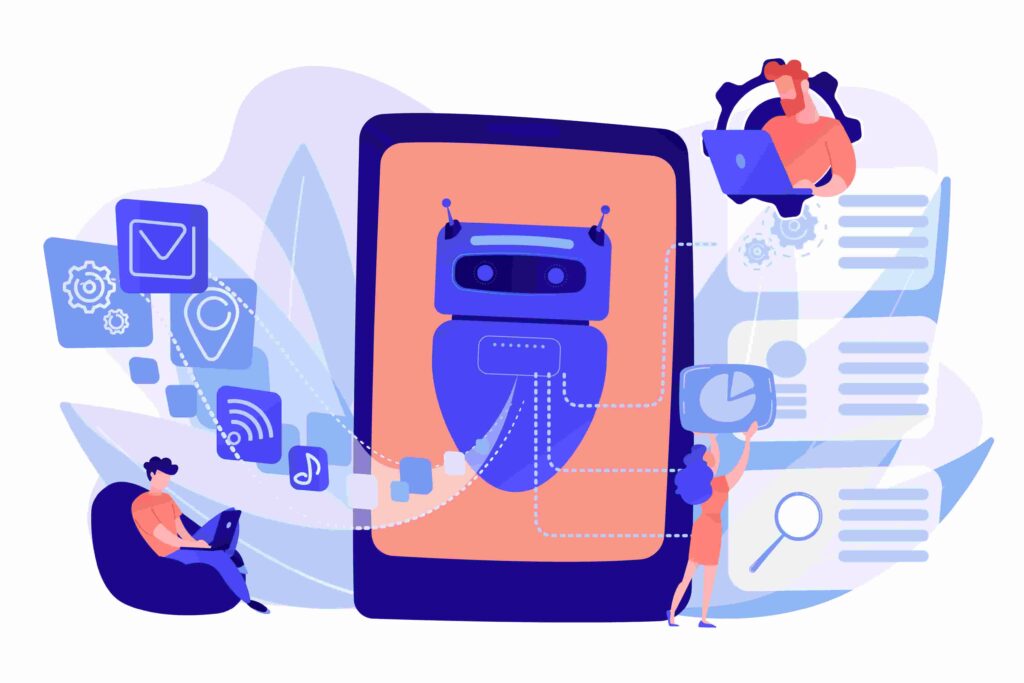A service desk system is an essential tool to manage the contact between companies and its customers and partners as it centralizes and organizes IT-related issues and requests.
This platform supports machine registration and tracking, speeding up query resolution and preventing problems. Therefore, this system is an excellent option to promote team organization and cost reduction in the department.
Want to learn more about it? Read this article to see how you can transform the performance and profitability of your support team.
What is a service desk system?
Also known as ticketing system, a service desk system can be considered a service center as it allows communication between a company’s service team and system users.
Therefore, it is essential for the proper operation of technical support and resolution of issues that require a high level of specialization. The system manages customer service teams and stores information from all tickets in one place.
It can also monitor the performance and quality of the service provided by the teams and transform all this information into reports, helping managers define service standards and identify gaps and opportunities.
This way, a service desk system ensures fast response, minimizing the negative impacts of problems submitted by users, not to mention that it can be a preventive tool to help improve a company’s IT and support infrastructure.
How does a service desk system work?
Service desk is the contact point that receives, organizes, and prioritizes requests from customers who need support from the IT team. The features of a service desk system provide efficient operations for the team, ensuring organized and safe processes.
All these benefits are possible because, in addition to being a channel for receiving requests, a service desk system can monitor customer’s machines. In other words, it provides real-time monitoring of changes in machines, including machine temperature and suspicious software download.
And, if something happens that is not according to security standards, a ticket is automatically created for the team to monitor and resolve.
Therefore, this solution is a great ally for teams to operate strategically and preventively, avoiding failures and ensuring service quality.
Read more: What customer relationship management is and how to use it in service desk
4 ways to reduce costs with a service desk system
-
Improve efficiency without hiring more staff
A service desk system allows monitoring and distribution of calls in a strategic manner, which speeds up problem resolution and avoids employee overload.
Also, thanks to features that ensure fast responses, such as integration with artificial intelligence, this system improves agent performance, allowing the team to resolve more issues in less time, avoiding errors and customer dissatisfaction, and consequently reducing operation costs.
-
Forget multiple platform subscriptions
Another advantage of a ticketing system, such as Milvus, is the centralization of several solutions in one place. By gathering technical support requests, the company can optimize resources and avoid duplication of effort.
In addition, the platform offers integration with Google Calendar, WhatsApp, financial management system BomControle, ChatGPT, and more to speed up daily tasks and reduce expenses.
-
Take control of contract management
A service desk system can also be used to manage contracts with IT suppliers. The platform provides service level management and an overview of contract information. This way, the team can monitor compliance with contract requirements, avoiding unwanted extensions and managing deadlines and maintenance costs.
This functionality can also help identify opportunities to save and renegotiate agreements based on an evaluation of customer history, delivering service beyond expectations.
-
Increase customer retention and reduce prospecting expenses
A service desk system allows a company to centralize service, automate processes, and integrate information, ensuring consistent and high quality solutions to customers.
It improves customer satisfaction with the service provided and, consequently, customer relationship with the company.
As a result, it increases the customer lifetime value by ensuring customer loyalty; after all, retaining customers is cheaper than prospecting new ones.
How to implement a service desk system in your company
A successful service desk system implementation requires good planning and should observe some basic steps, as follows:
- Identify business objectives and define functional requirements, including number of technicians and services offered;
- Analyze the IT infrastructure and technical support processes to identify gaps and opportunities for improvement;
- Choose a service desk system that meets your business needs, considering its features, scalability, integration with other tools, and cost;
- Develop clear and detailed processes and procedures for incident, request, and change management, always using best practices;
- Configure and customize the service desk tool according to defined processes;
- Train your team to ensure effective service delivery;
- Implement a communication plan to inform the organization about how and when to use the service desk;
- Monitor system performance and make all adjustments required to achieve the objectives.
Milvus – the most comprehensive service desk system
Now that you know what a service desk system is and how it works, you have to choose the right tool for your company. Milvus is an omnichannel customer relationship platform that manages all service channels for easy handling of customer requests and task automation, among other features that are described below:
- Centralization of tickets created through chat, email, telephone, portal, form, WhatsApp, and other channels.
- Call answering, with query escalation, assignment of checklists, closure with review, and call evaluation.
- Contract billing, which allows profitability analysis and document customization.
- Hardware, software and license inventory management, which collects data in real time and helps prevent failures.
- Generation of reports with statistics and results for continuous improvement of the department and its practices.
- System maintenance and updates, offering improvements, corrections and a team attentive to customer needs.
Want to learn more? Count on Milvus expertise and automate your customer service. Contact Milvus now and take a free trial.







